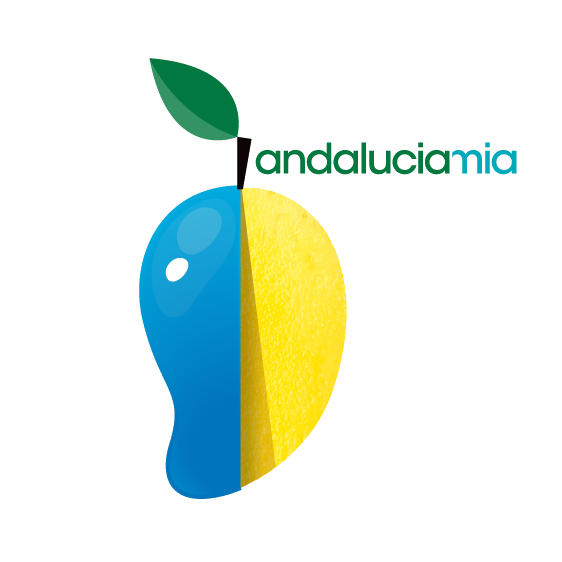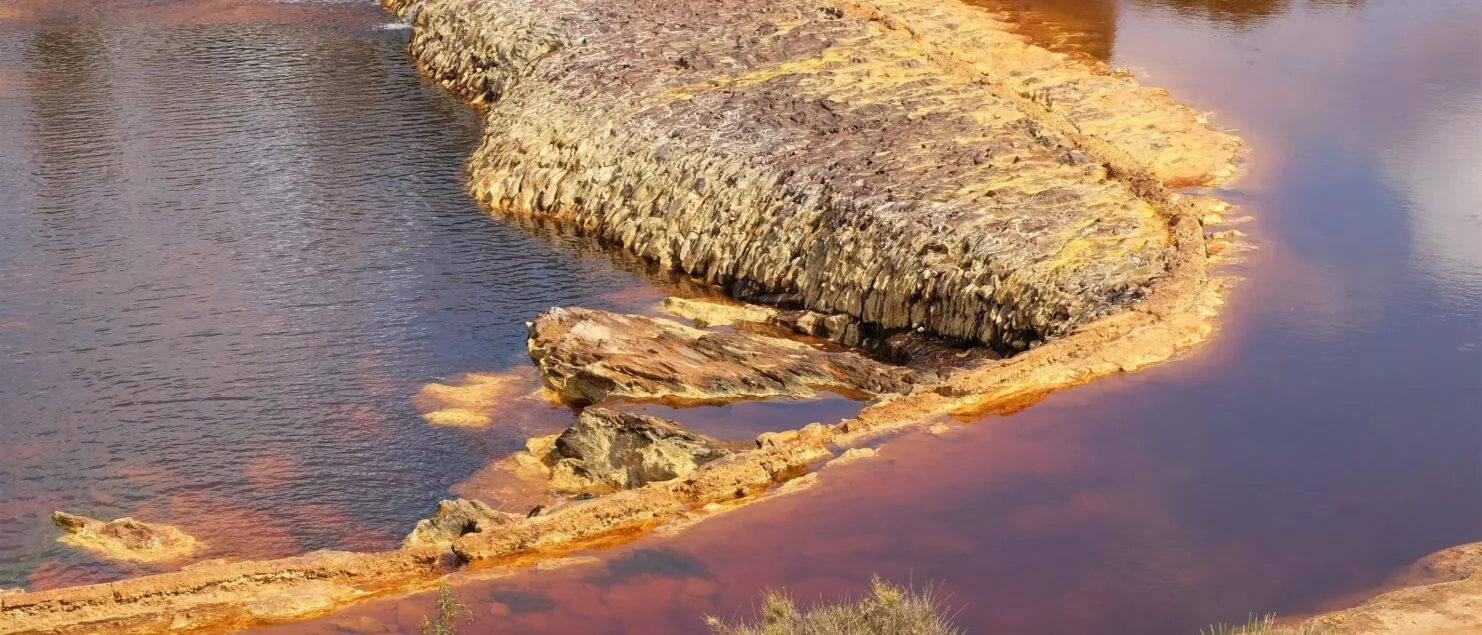Rio Tinto river in Spain things to see about the red river
Discover the incredible Rio Tinto river in Spain and its flour mills on a hike
In this article you’ll find all the essential information about the rio Tinto river in Spain, as well as a few surprises:
- A few words about the rio Tinto river
- Hiking: The Rio Tinto river and its flour mills
- The red river in Spain and Spanish football…
- The rio Tinto river in Andalucia and NASA
- What to do in Huelva
- What can you see near the rio Tinto?
- Some useful links
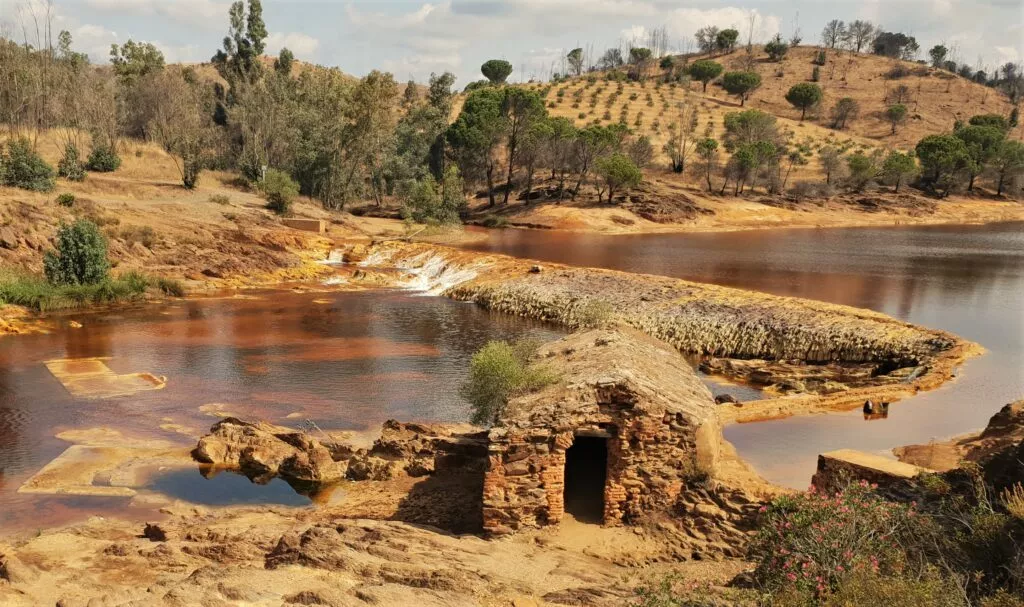
A few words about the rio Tinto river in Spain
The Rio Tinto is a river in the province of Huelva in Andalucia. It is around 100 km long, from its source to the Huelva estuary.
Why is the Rio Tinto river red ?
The special feature of this river is the reddish colour of its water, which is why it is known as the Rio Tinto. Naturally, the further you go back to the source, the redder the water becomes.
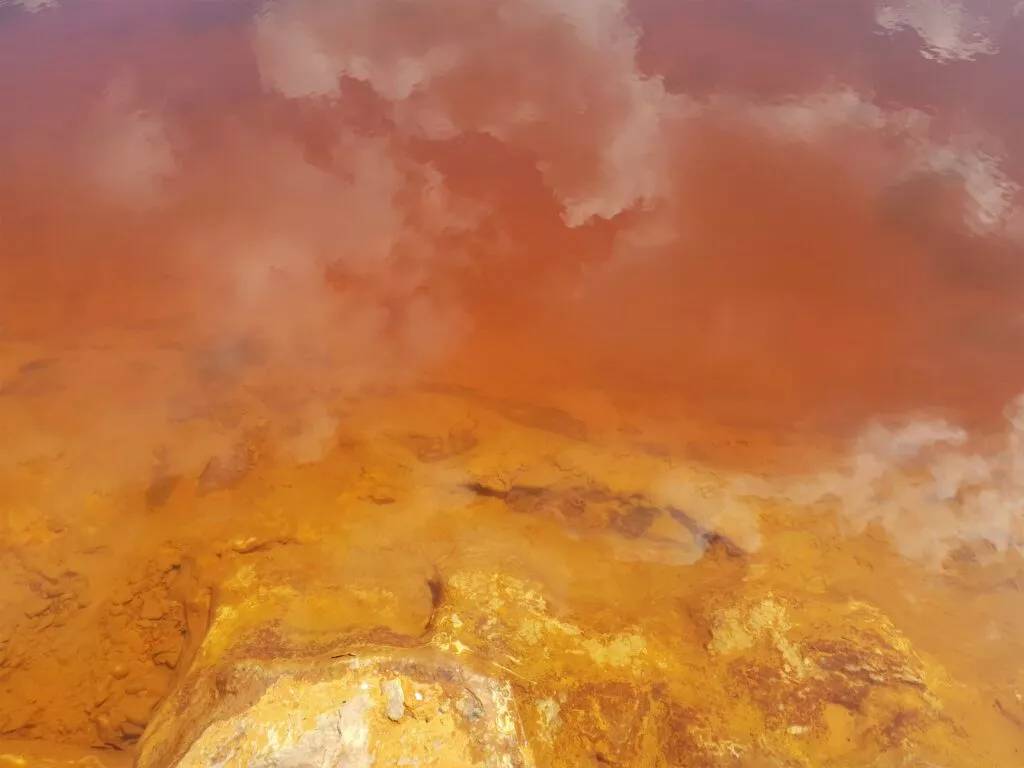
We now know that this is a natural phenomenon, having long thought that it was only human exploitation of the mines near the source that caused it.
To try and explain this phenomenon… Because you have to know where you stand… :
There is an aquifer at a depth of 600 metres that has caused hydrothermal deposits, currents of fluids that have been loaded with metals. Then, in fractures in the earth’s crust, these metals were deposited on the bottom of a cavity and mineralised 300 million years ago…
Note: I have enhanced the text with photos taken during the hike.
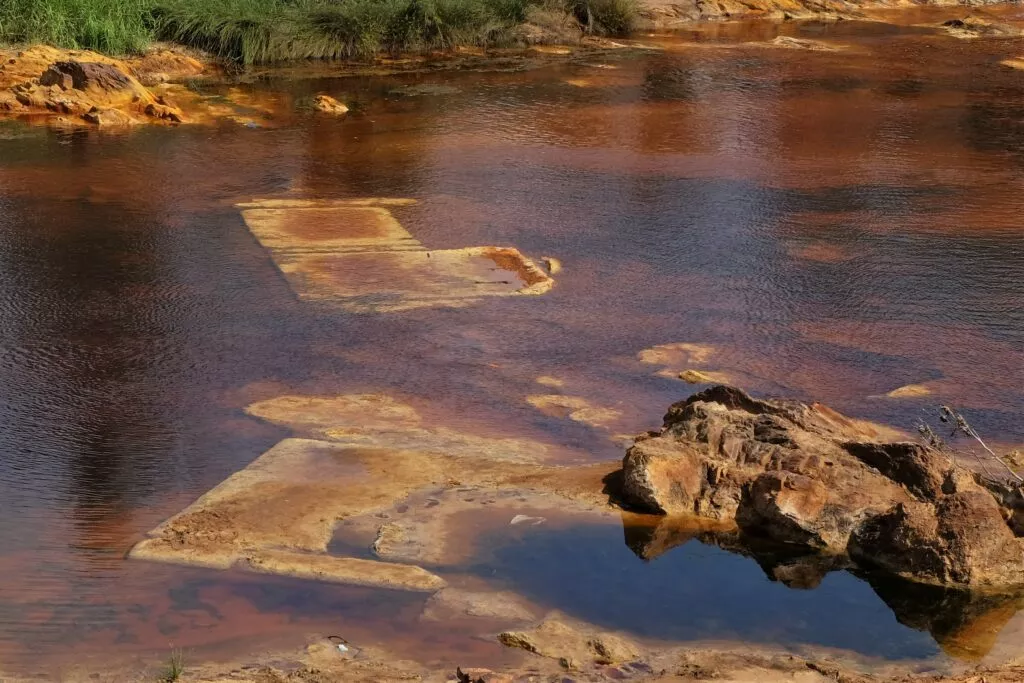
These metal mines were discovered around 5000 years ago. They were exploited by the Tartessos, the Iberians, the Phoenicians, the Greeks, the Romans, the Visigoths, the Arabs,….. and right up to the present day, from 1873 onwards, by a well-known company with the same name: Rio Tinto Company Ltd.
Ore was mined for copper, iron, manganese, silver and gold. Mining declined from the 1980s onwards and came to a complete halt in 2001.
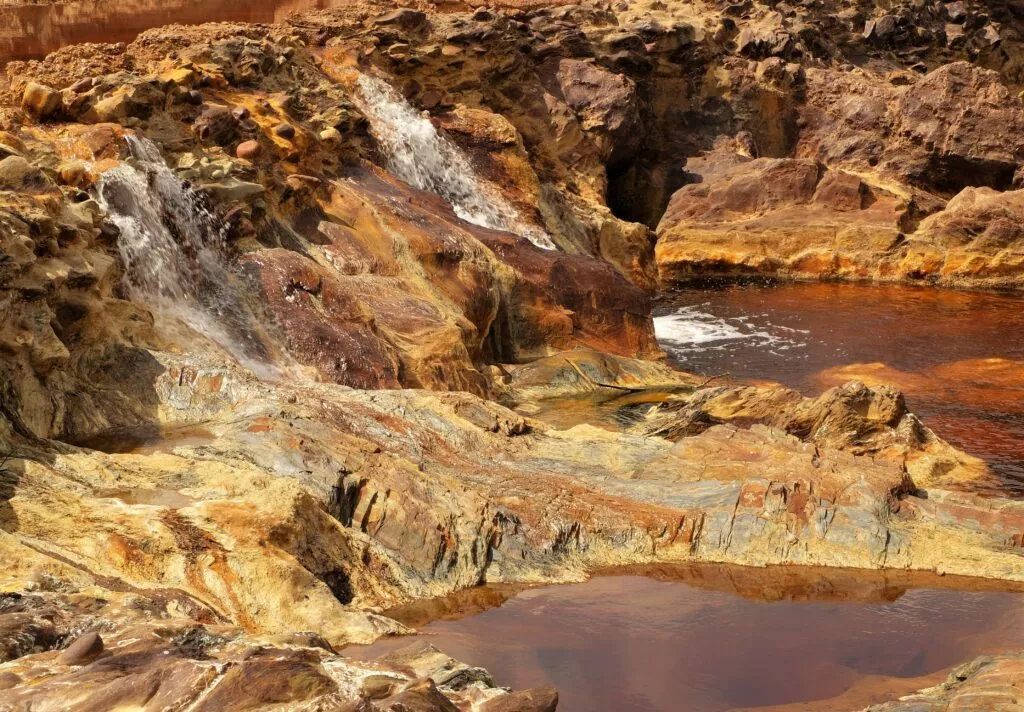
It’s quite incredible that a mine has been in continuous industrial operation since the Romans, i.e. for 2,000 years.
Today, tours are organised to see the excessiveness of the mining sites, including the Corta Atalaya mine, which was once the largest open-cast mine in Europe, a unique place for all aficionados of industrial tourism.
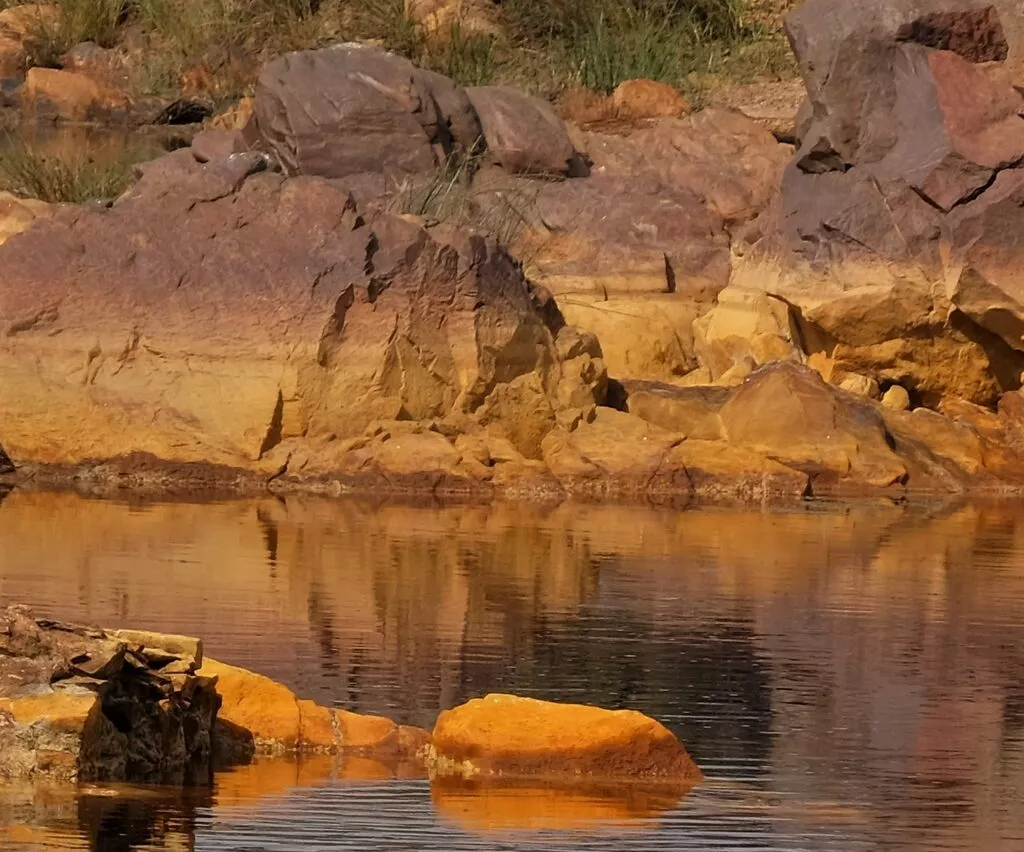
Since 2012, the Corta Atalaya has been listed in the General Catalogue of Andalusian Historical Heritage as an asset of cultural interest.
The rio Tinto has also been listed as a Protected Landscape.
Special hike in Spain the Rio Tinto river and its flour mills
This walk along the banks of the Rio Tinto is quite extraordinary for the atmosphere it offers. What’s more, you’ll discover some very old flour mills.
The best place to start is the San Juan mill:
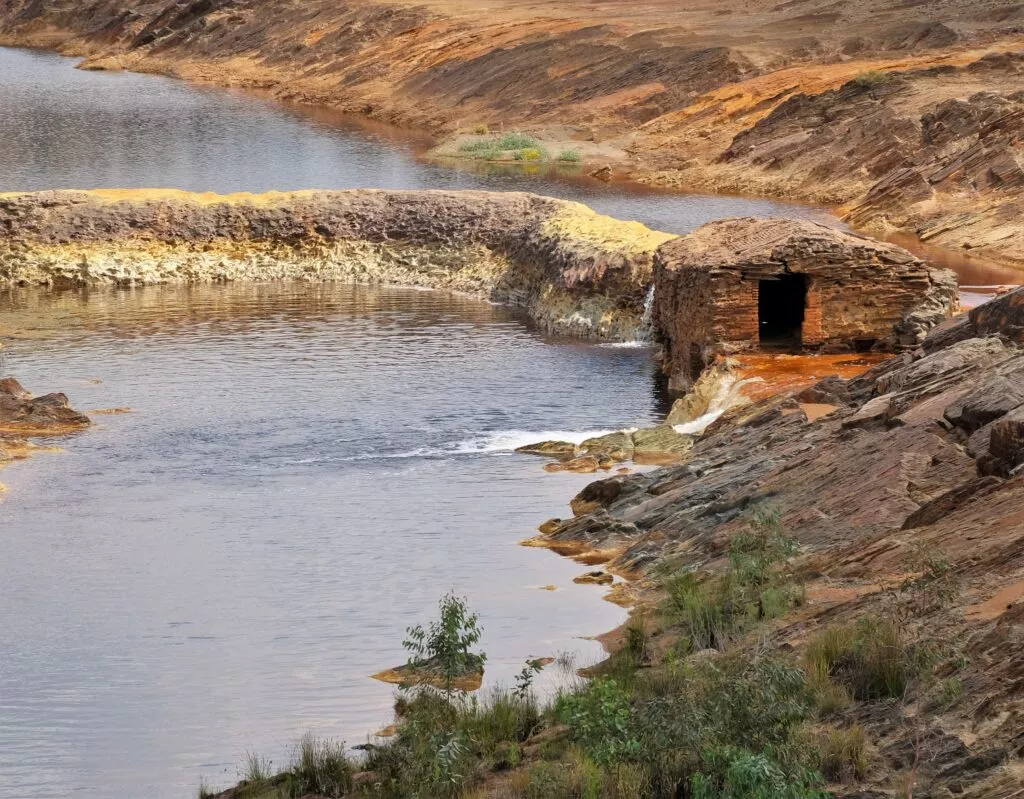
The surrounding landscape is spectacular.
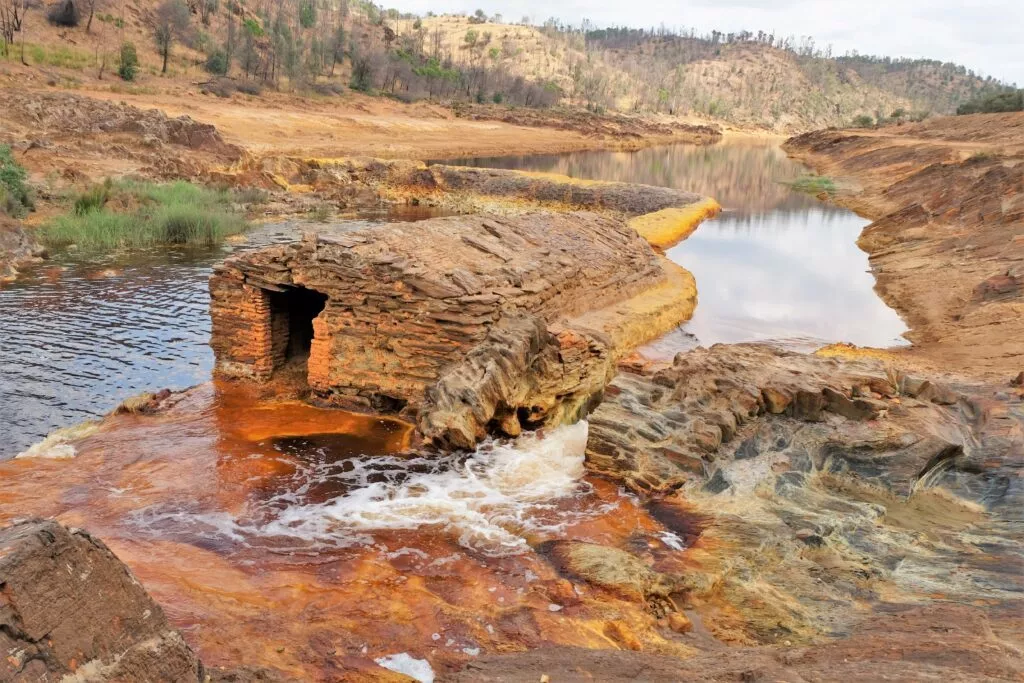
It is easy to walk along the dyke built to carry the flow of water needed to operate the old mill.
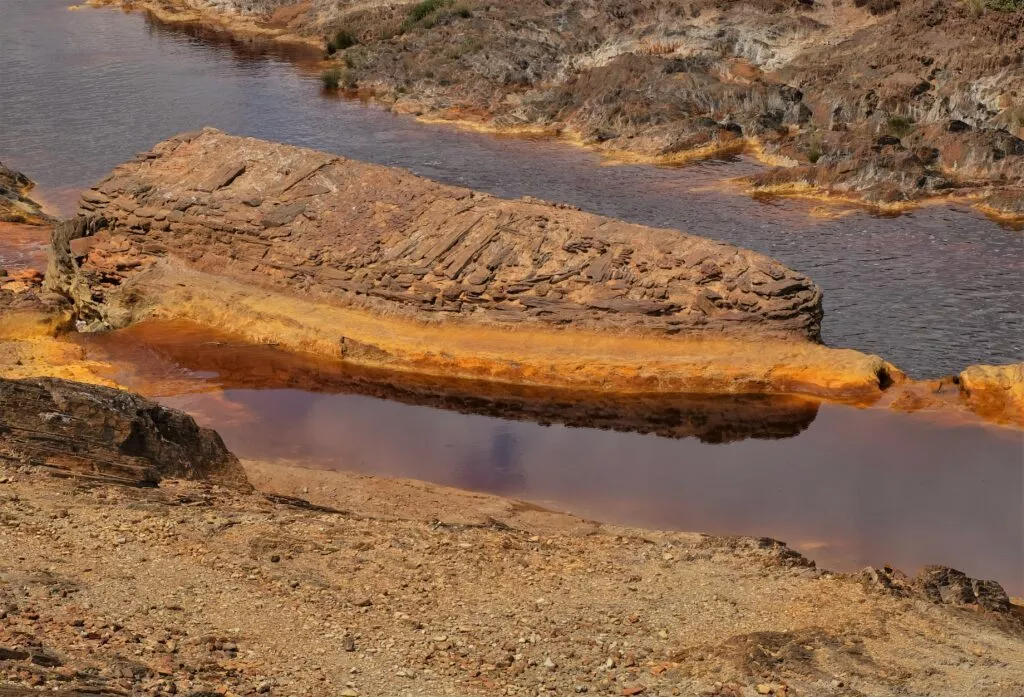
On the way back down the river you can see the following mills:
- Gadea Mill (below) :
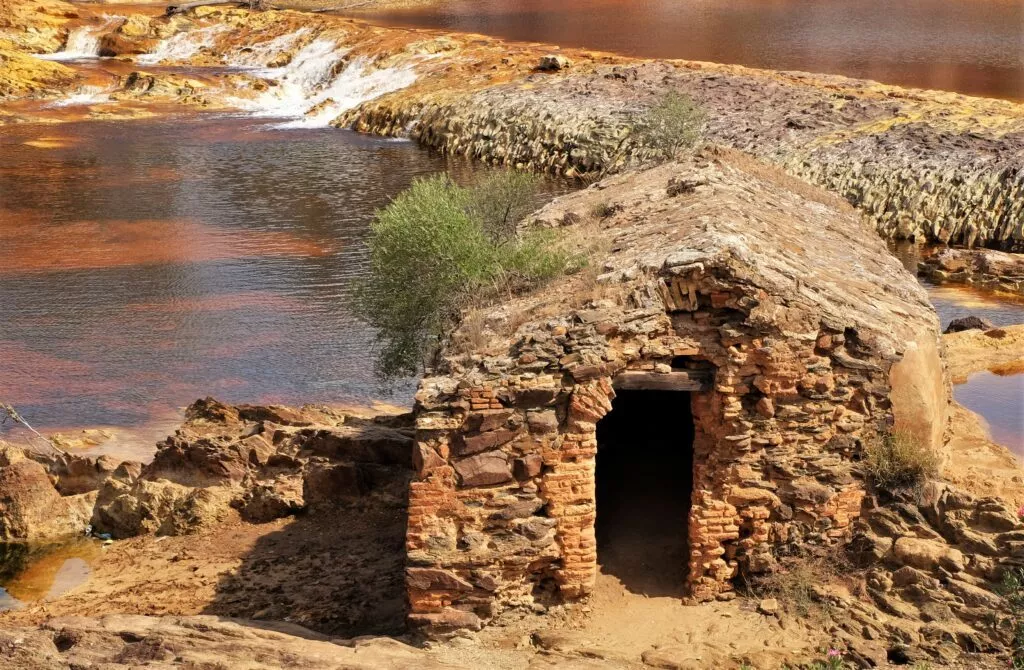
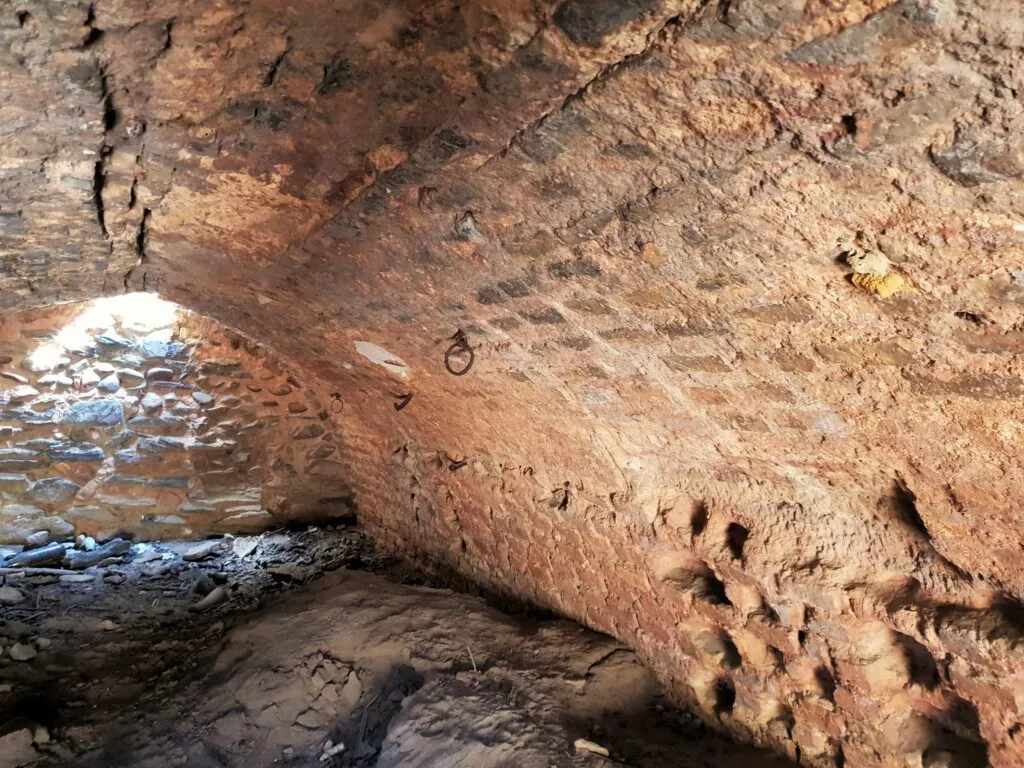
- Juan Muñoz mill.
- Centeno Mill.
- La Vadera mill.
Note: from the bridge you can take the path that runs alongside the river (this path is in fact the old railway line to Huelva) and park the car at the San Juan mill and drive back down the river to see them all.
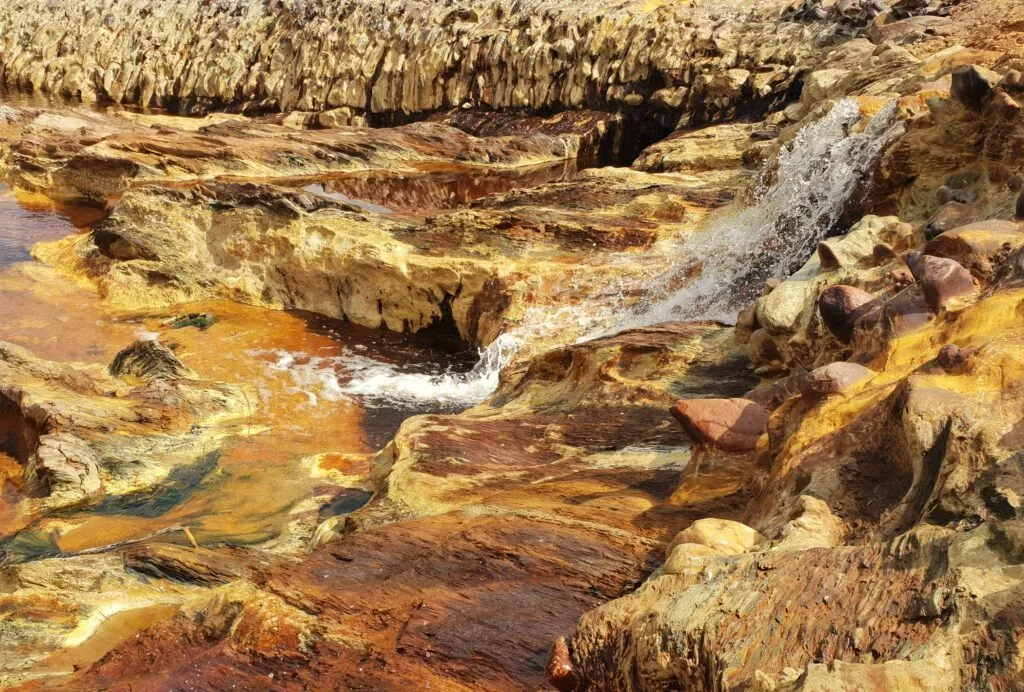
The walk is easy, as it follows a river, so we’re on level ground. However, you’ll need to carry water in your bag, as it can get very hot and there’s no shade.
The place is easy to find and the walk can be done in 2 directions from the bridge: there are flour mills in both directions.
This is the starting point for the walk: Puente de Gadea.
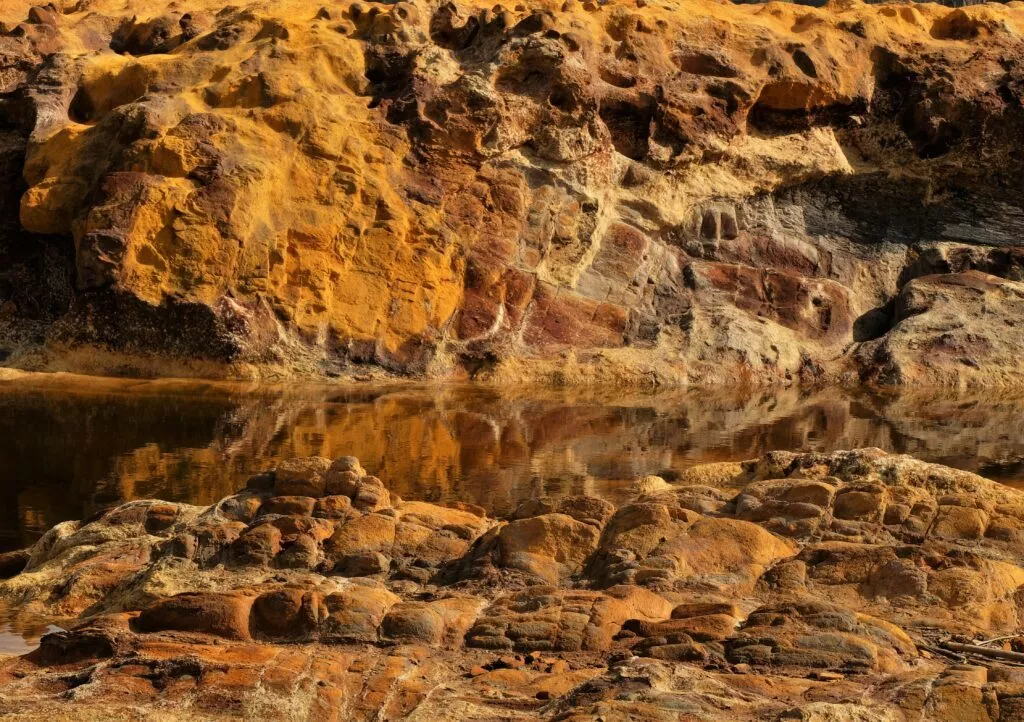
Another curiosity of this small region: the storks
Storks are a permanent fixture in the area.
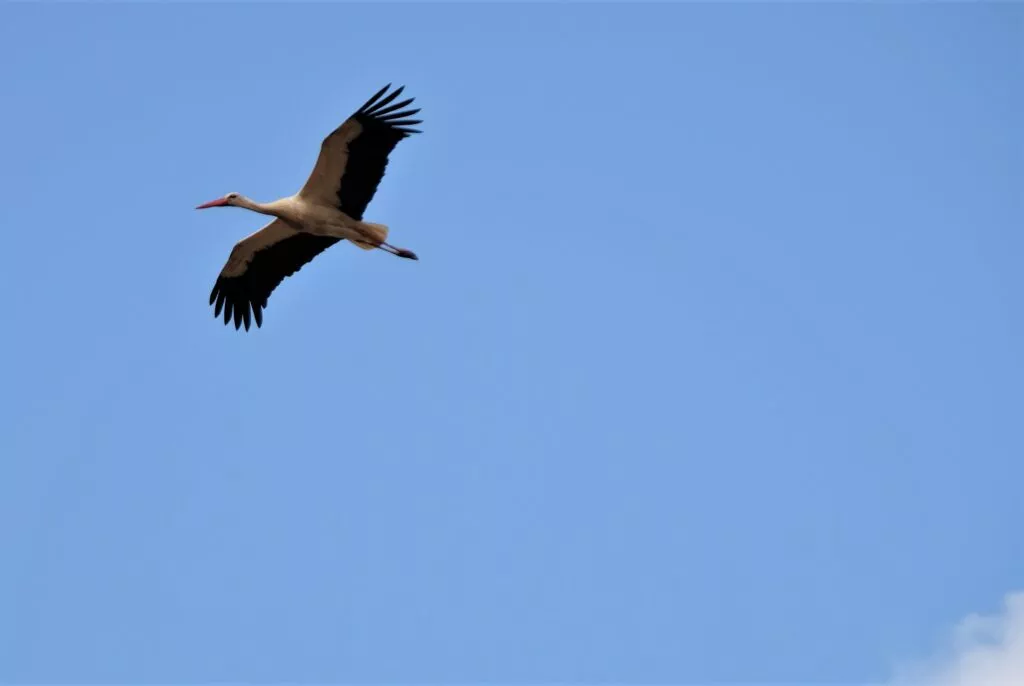
The electricity pylons on the road from Niebla to the hiking point are “full” of storks:
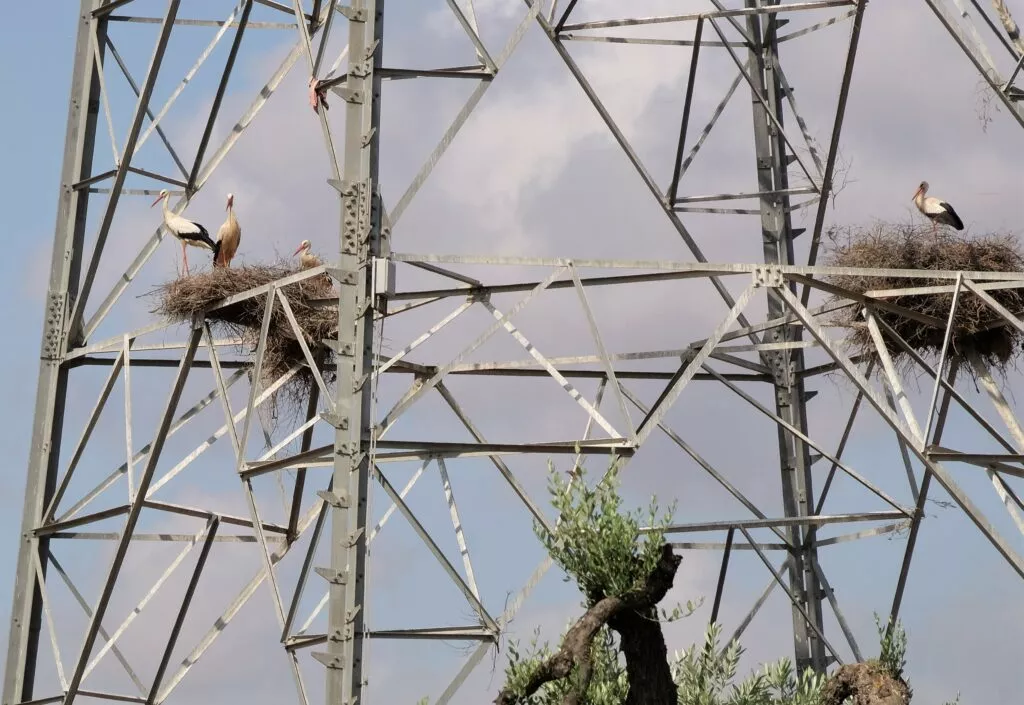
really full of storks….
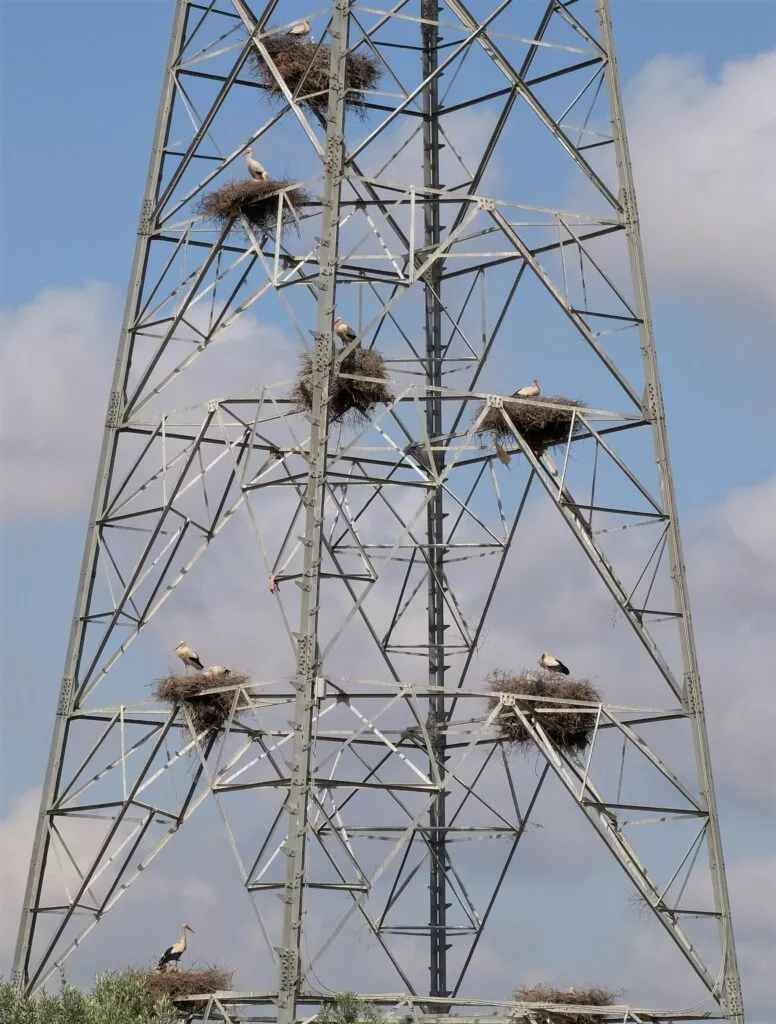
The Rio Tinto river and Spanish football…
Here’s the curious link between the Rio Tinto and football in Spain.
The Rio Tinto company, which began operating the mine in 1873, arrived with its own customs to occupy the English employees who settled here. At the time, this place was cut off from the rest of the world. They came with poker cards, cricket equipment and a round ball.
The balompié became very popular with the mine employees, and in 1878 a company club was formed: Club Inglés, later renamed Rio Tinto FC.
Then, in 1889, the first official Spanish football club, Club Huelva Recreation, was founded by two Scotsmen.
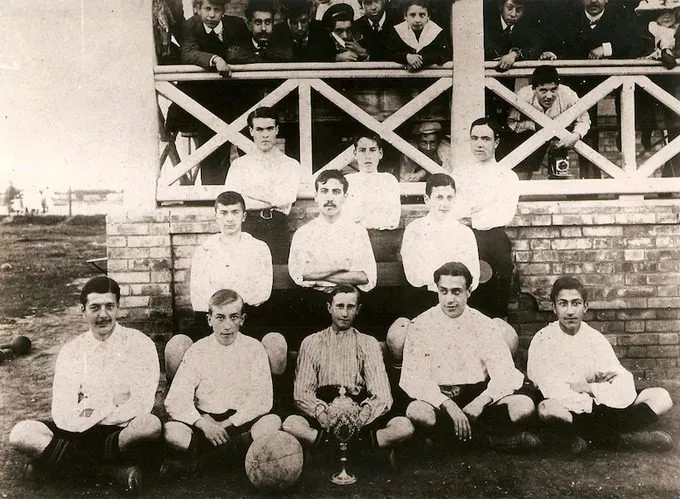
Above, a photo of the team in 1906, 17 years after the club was founded. Source: the club’s Wikipedia page.
The beginnings of football were complicated at the time. The sport was initially rejected by the local population for its violence and obscenity. Indeed, girls from the surrounding villages were even forbidden to come and watch men playing dressed in nothing but underwear… (This story is told by historian Rafael Cortés, from the Spanish football association Cuna del Fútbol).
The river Rio Tinto and NASA
One of the special features of the Rio Tinto is the discovery of extremophilic micro-organisms, members of the acidophilic family!
They take the form of fungi and algae, some of which are endemic, and feed on metals!
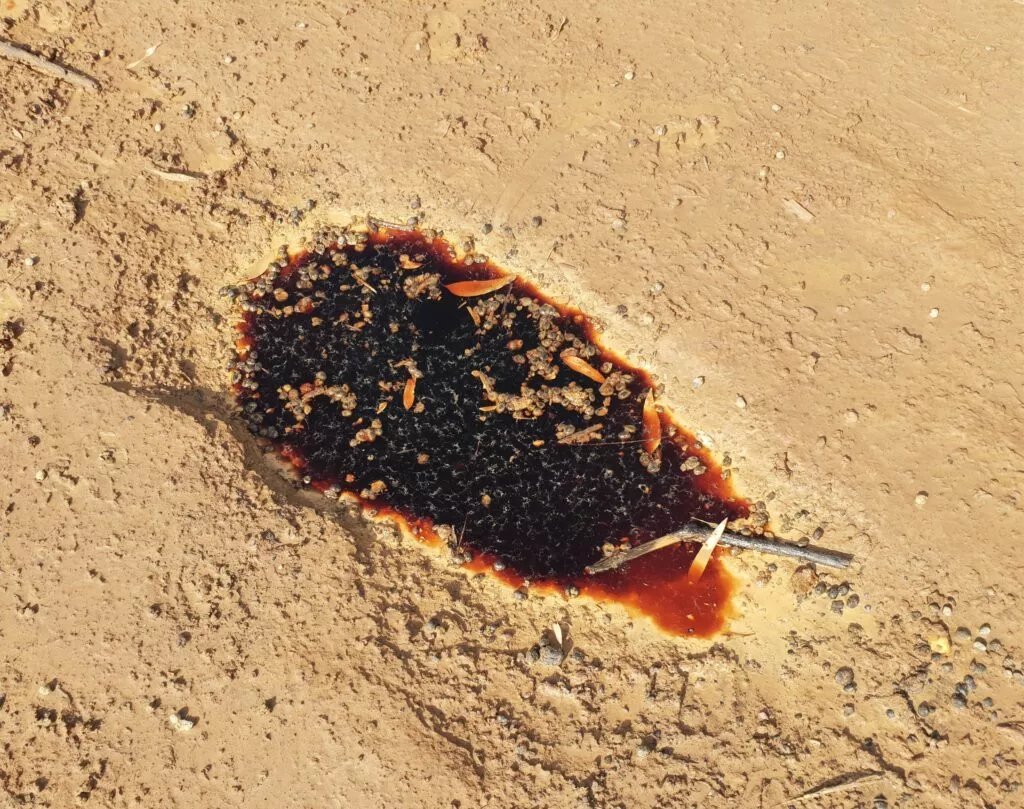
These bacteria oxidise metals and release iron sulphides, which give the river its red colour.
Nasa periodically sends teams to study the Rio Tinto and these micro-organisms. In addition to the colour of the river, the aim of these studies is to identify the organisms that would be capable of living in the extreme conditions of the planet Mars.
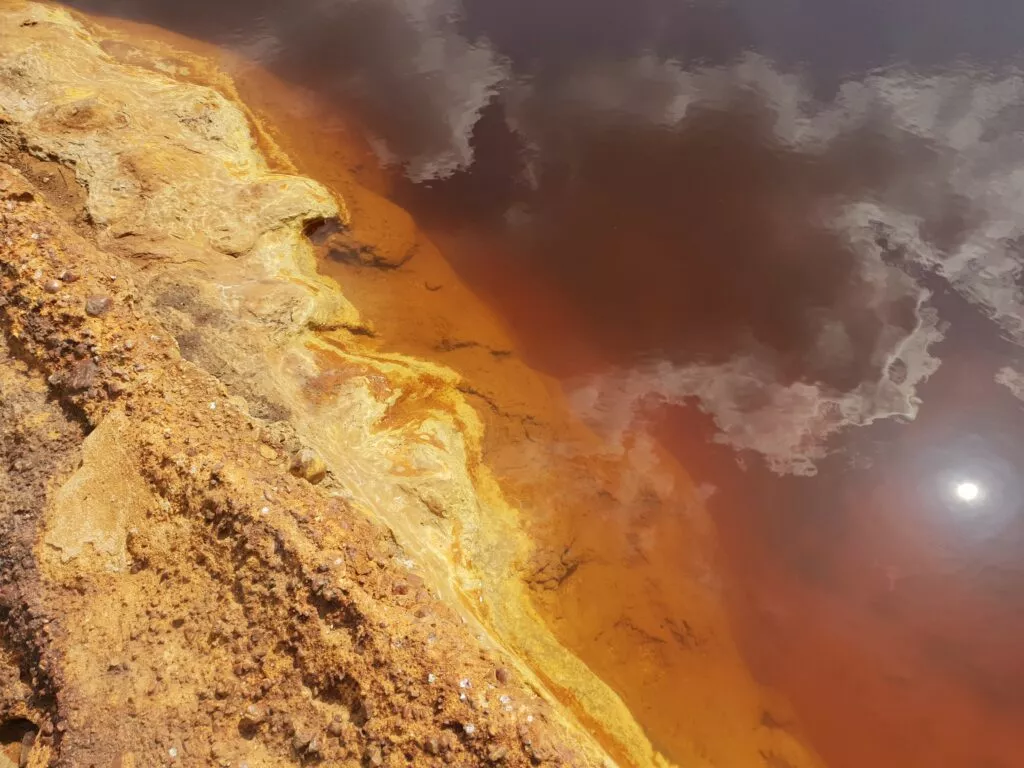
Another curiosity (incredible for a neophyte like me on this subject): these micro-organisms that feed on heavy metals (such as cadmium) are also photosynthetic… These bacteria therefore produce oxygen…
What activities can you do in Huelva?
Below are a number of ideas for activities and visits, classified by theme. You can book them online today.
The +: the activities can all be cancelled up to 24 hours before the scheduled date.
What can you see near the Rio Tinto river ?
The province of Huelva in Andalucia hides many treasures. It’s a beautiful province to discover.
The small town of Niebla
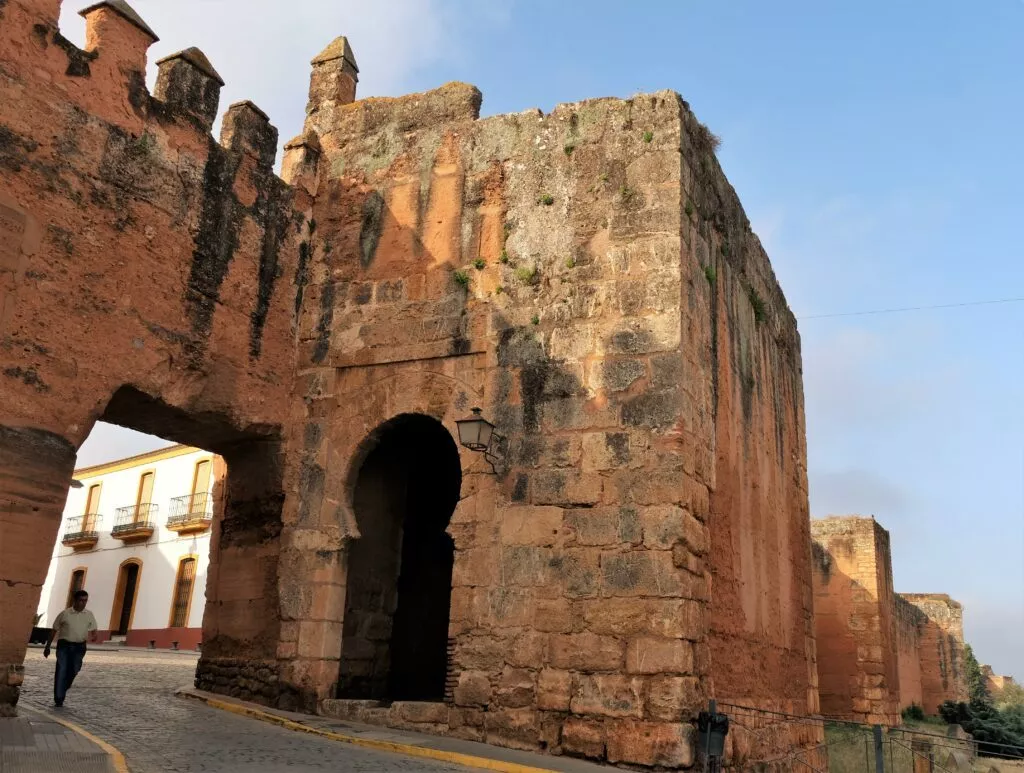
Niebla is a small town with an incredible history.
It lies 25km from the site of the hike, hidden behind a circular wall 2km long:
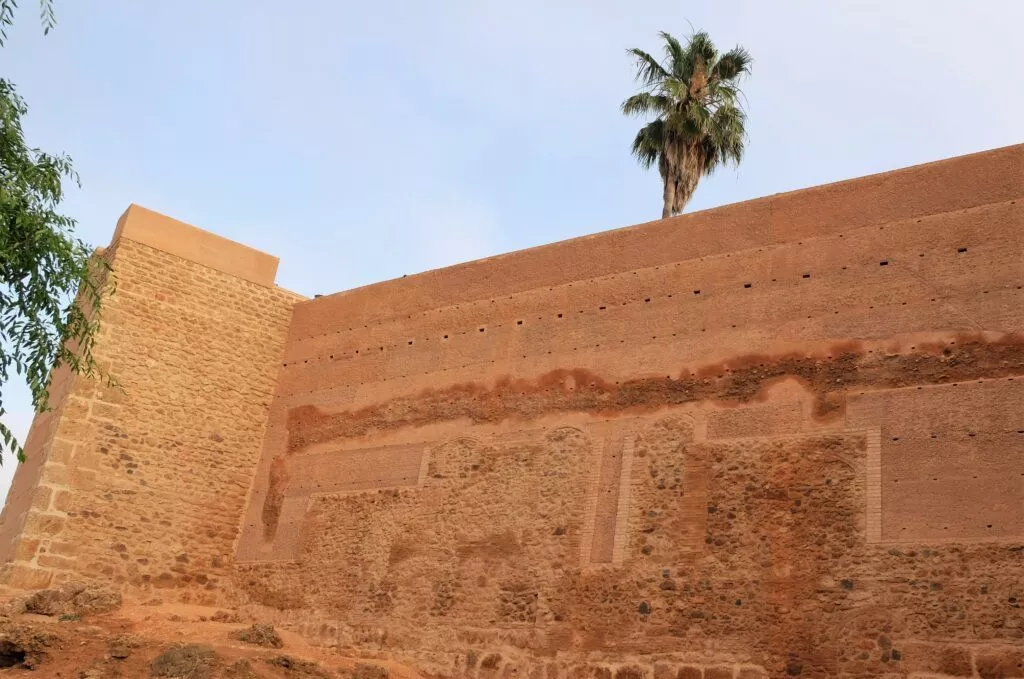
One of the little treasures of this somewhat forgotten town is a Roman bridge under which flows the Rio Tinto. Worth a visit.
Matalascañas beach
When it comes to beaches in the area, here’s a magnificent one: Matalascañas beach.
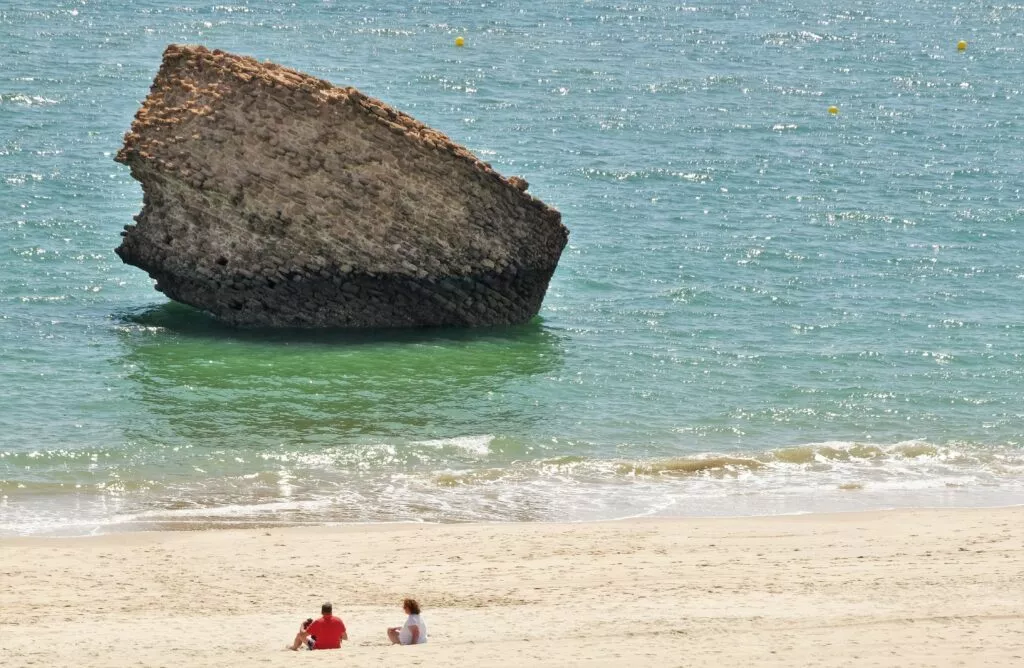
It offers miles and miles of flour-fine sand. To get there, you’ll have to drive along the Doñana Park!
El Rocio
On your way to or from the beach, be sure to visit the famous village of El Rocio. It’s a magical place, where Spain’s biggest romeria (pilgrimage) takes place every year. This village has no roads, only sand. It’s easier to get around by stagecoach or horse than by car.
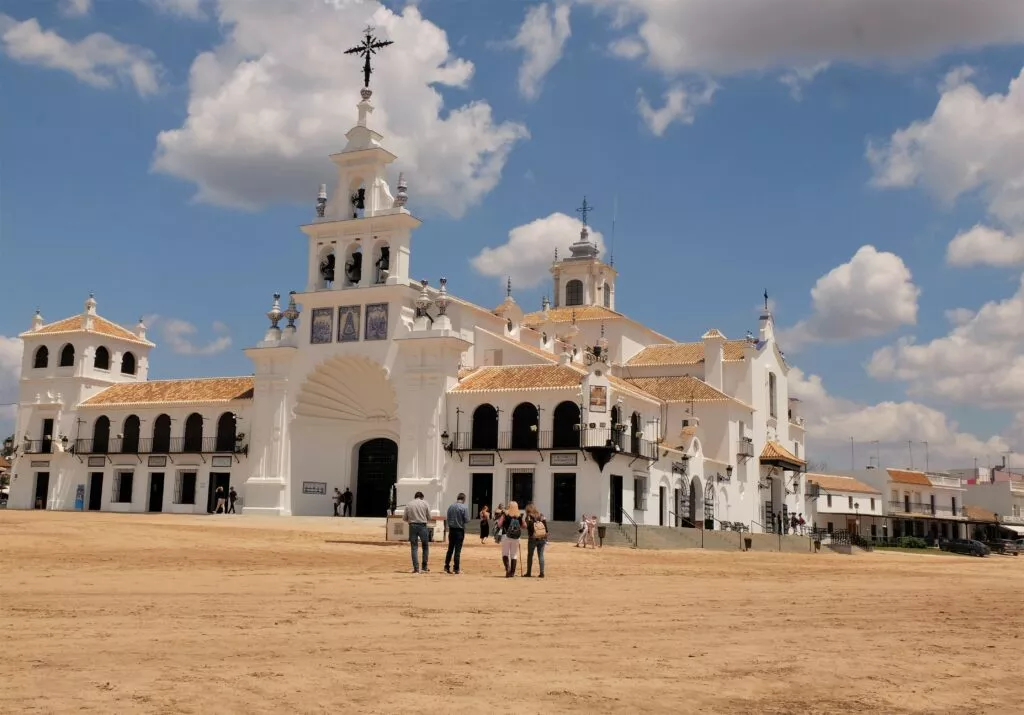
It’s easy to see how the Spanish colonists influenced the Americas (in terms of ranches, stagecoaches and cowboy outfits). That’s where it all started!
It’s strange the impact of films, because today we know the Tabernas Desert for its western film sets. But all this American western scenery originally came from the Spanish settlers in this region, who went to live in the Americas after Christopher Columbus discovered this sea route. Didn’t he set sail himself, with the Santa María, the Pinta and the Niña, from a small port just a few kilometres from here?
Book accommodation in El Rocio, a unique place to visit the surrounding area
Below, you will find live rentals or accommodation available in El Rocío, after selecting your dates:
Some useful links (car hire, ideas for visits)
Easy and economical bookings
If you are in Andalucia as part of a tour with several major cities to visit, here are some links that may be of interest :
Discover an unusual Seville :
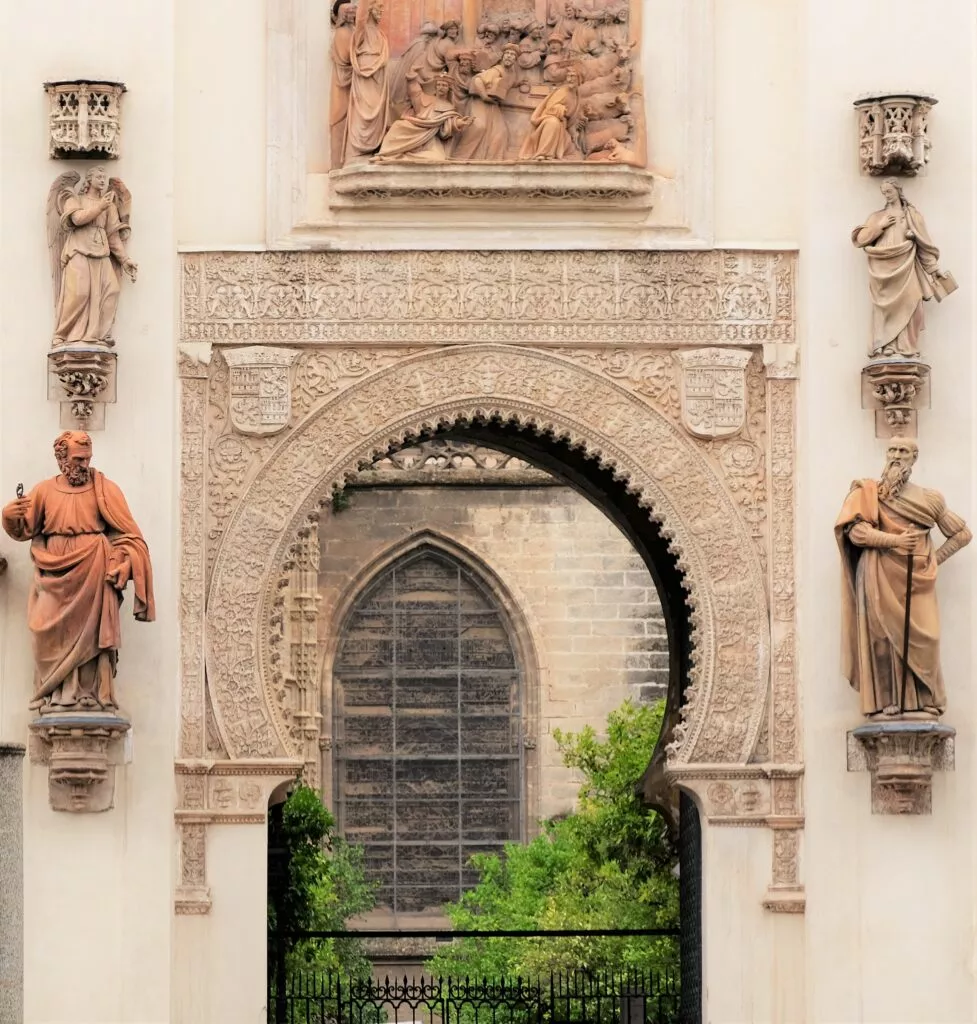
Then stop off to visit Ronda, perched high on a cliff :
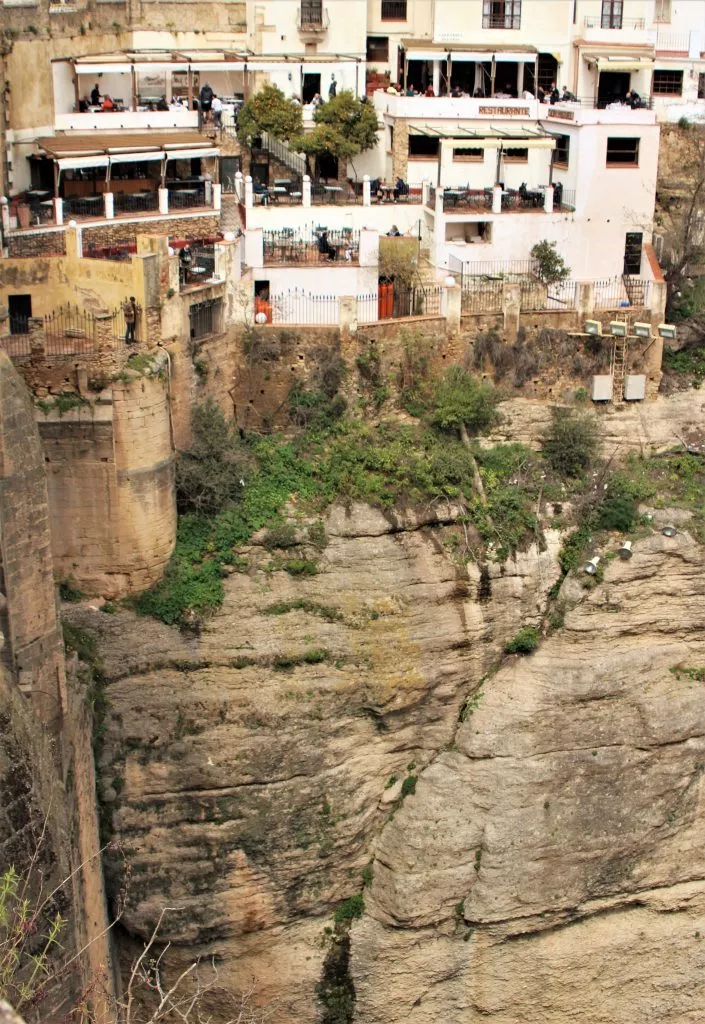
16km from Ronda, don’t miss the incredible Setenil de las Bodegas, a village with streets under rocks:
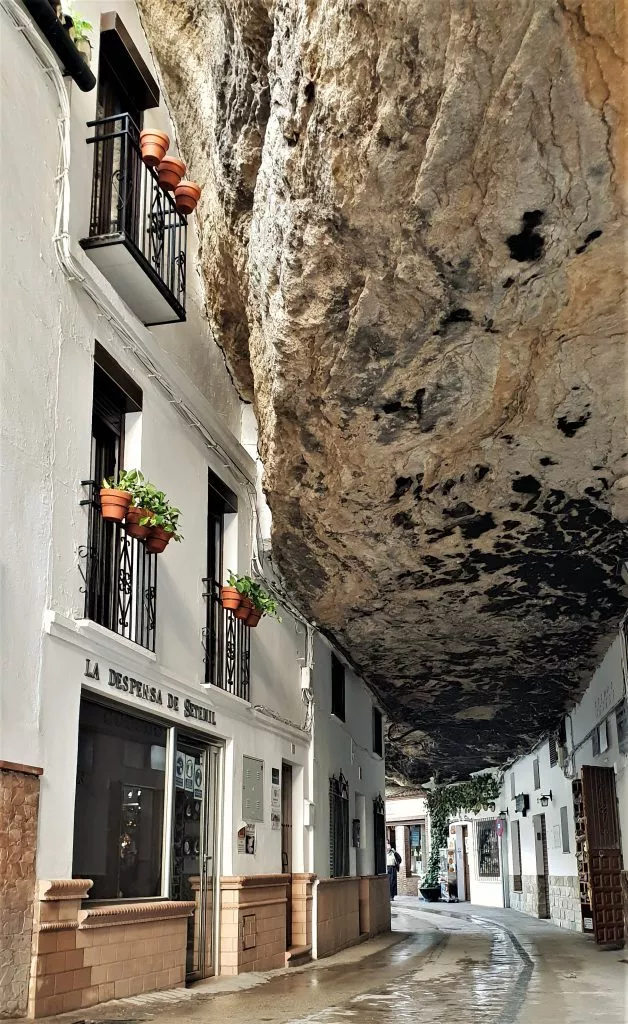
If you are passing through the geographical centre of Andalucia, then you can visit Antequera, with the incredible natural site of El Torcal right next door.
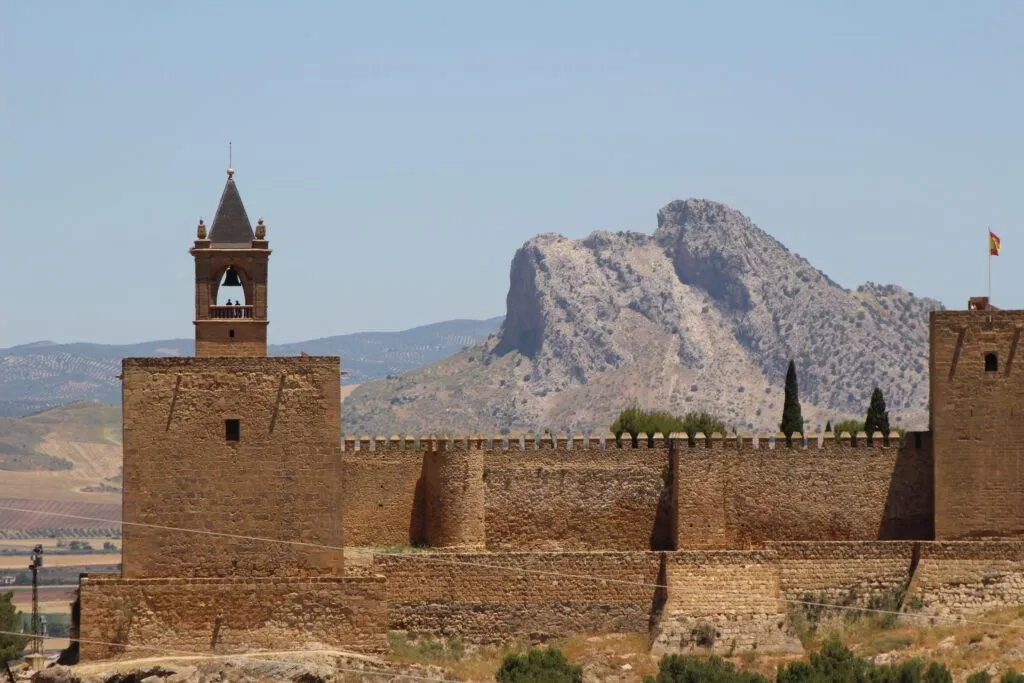
Discover more of Andalucia’s beautiful sites in the Andalucia blog pages.
Here is the link to receive our andaluciamia.com blog newsletter
The latest articles on Andalucia
-
Interactive map of Andalucia with best places to see
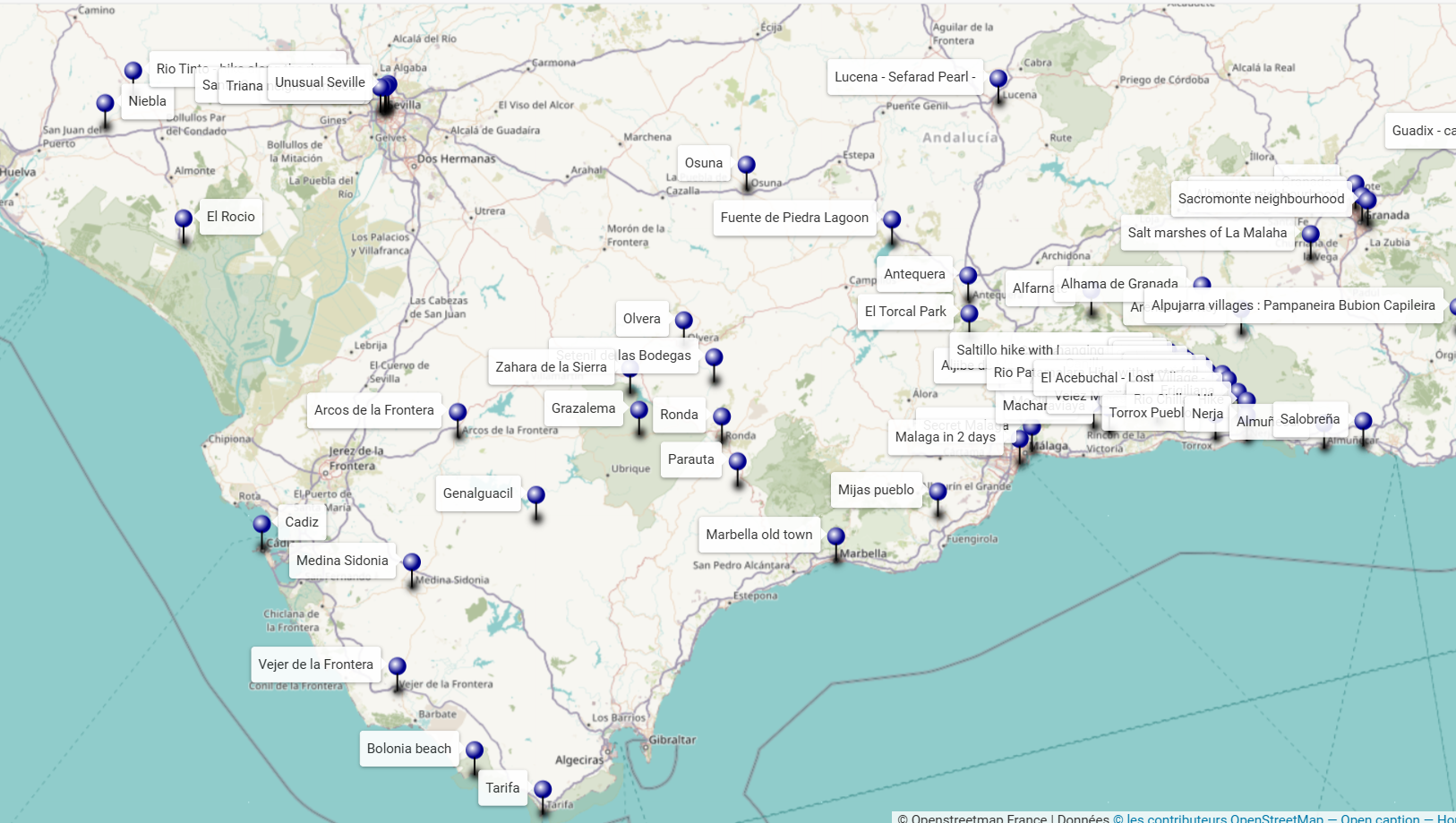
An interactive map of Andalucia to discover the sites to see around your holiday destination or to prepare a tour or road-trip.
-
Andalusia off the beaten track : 18 gems
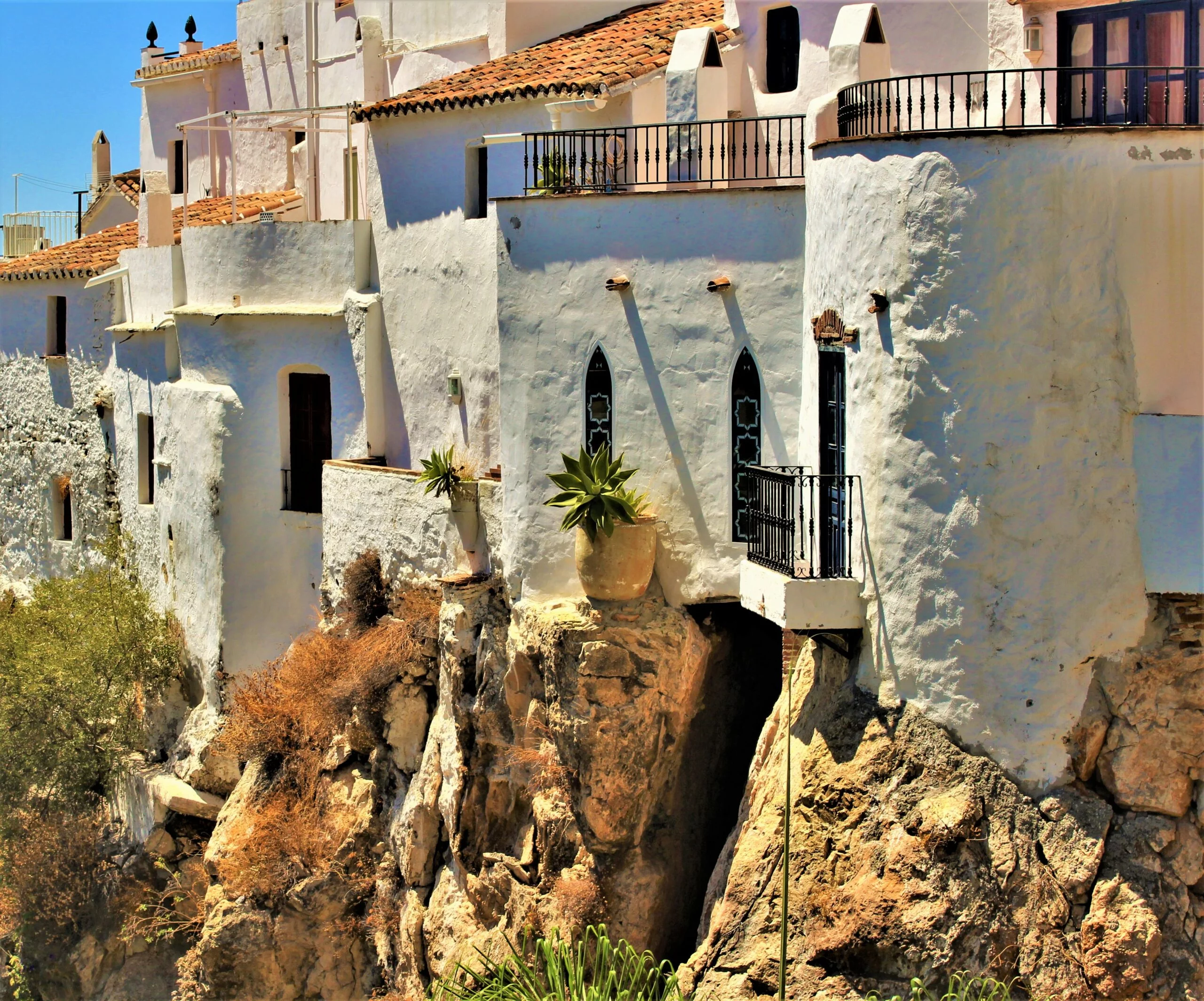
Let’s immediately set off to discover an Andalusia off the beaten track. There are many wonders to discover.
-
19 Most beautiful white villages in Andalusia
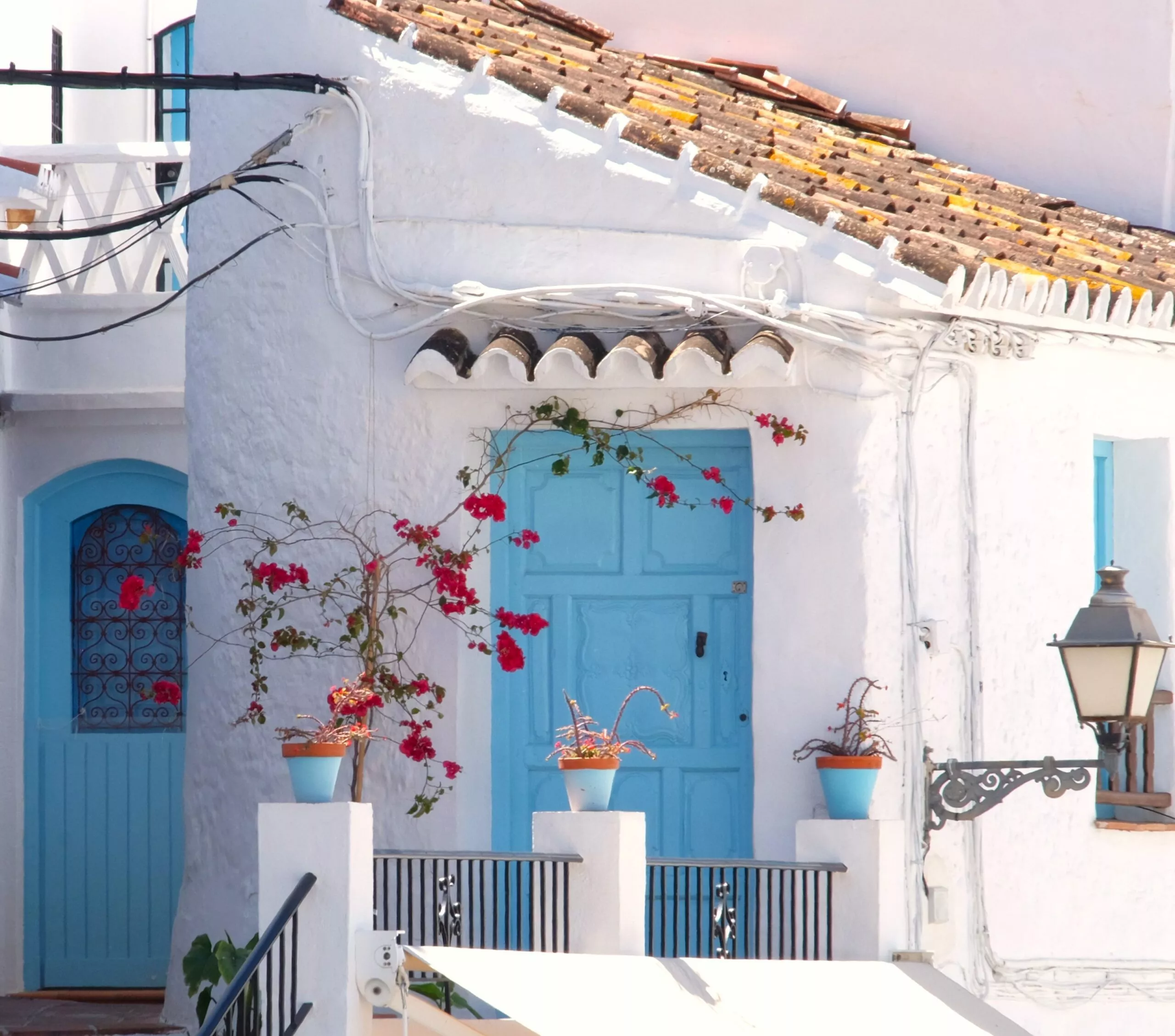
Discovering the most beautiful white villages of Andalusia. These villages are the only ones to be part of the Pueblos más bonitos de España.
-
Unusual Andalusia – 15 Very Surprising Places –
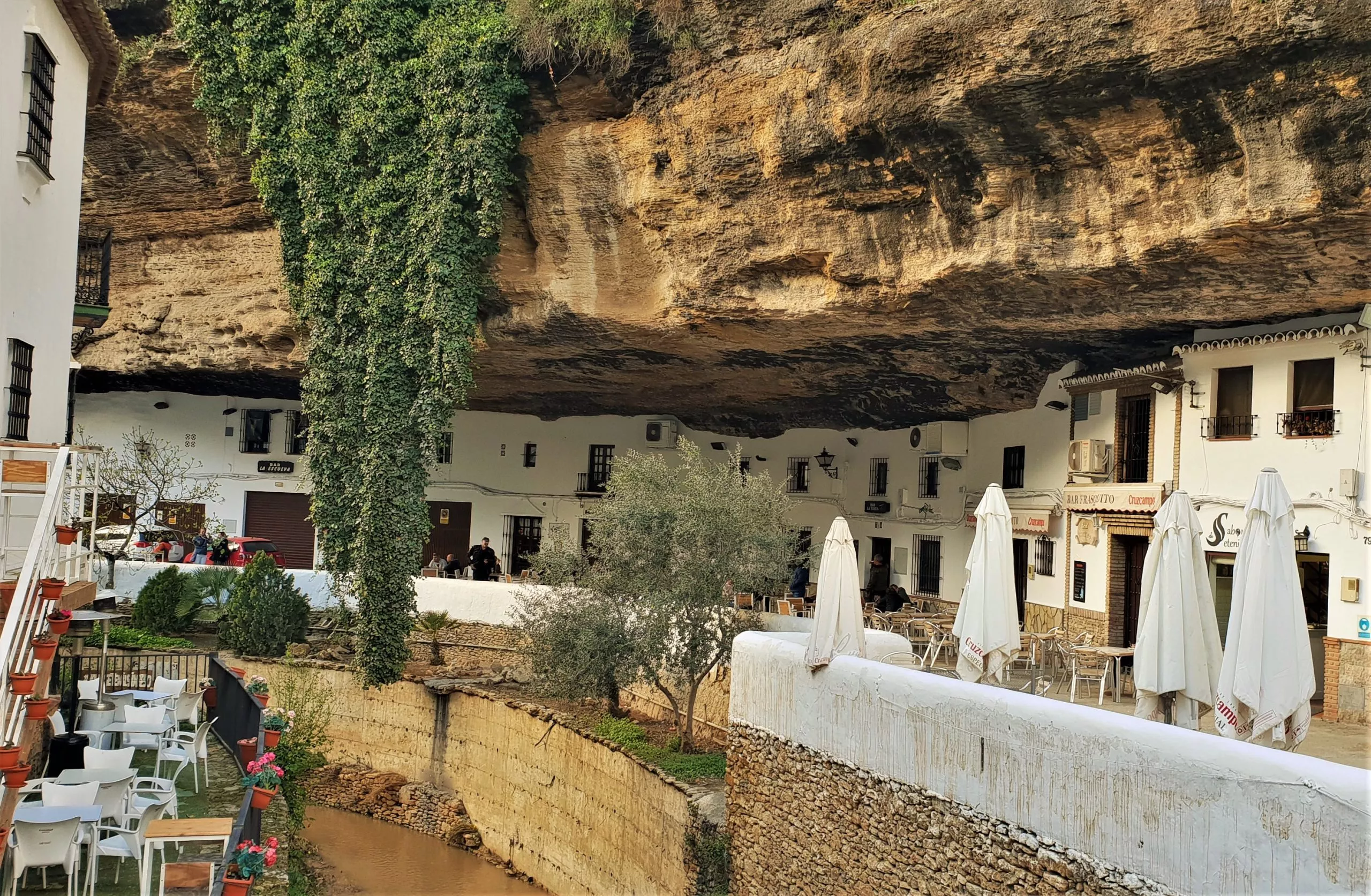
Unusual Andalusia: discover the most surprising and wonderful places in southern Spain.
